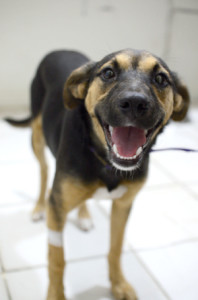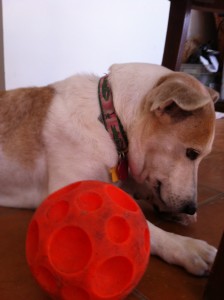Yes! Why “no” holds no value.

Luna is available for adoption through ARF www.arfrincon.com
Photo curtesy of Lauren McLaughlin photography www.photographyLAM.com.
Often folks are encouraged to let dogs know that they are displeased or prefer that they don’t continue with certain behaviors by saying the word, “no.” The word, “no,” however is one that you might consider eliminating from your vocabulary with your pup.
“No” doesn’t tell the dog what exactly we don’t want him to do. It doesn’t let her know what we would like her to do. And, bonus, saying “no” actually acts as a reinforcer for the dog. When you say, “no” you are paying attention to your dog, you are speaking to your dog, and often the word is exclaimed with great enthusiasm which may seem exciting to your dog as well.
Instead, consider ignoring a behavior that you prefer not to see repeated. Without reinforcement, research shows that the behavior will extinguish. Furthermore, you can teach and put on cue an incompatible behavior as just as you can’t be in two places at once, you can’t do two opposing things at the same time (think sit & jump up).
Finally, catch your dog doing something right and praise and reward. After all, if you change your vocabulary to include more of the word, “yes” you will find you have a happier, healthier relationship with your pet.
PAW can help you get started on these changes today!

